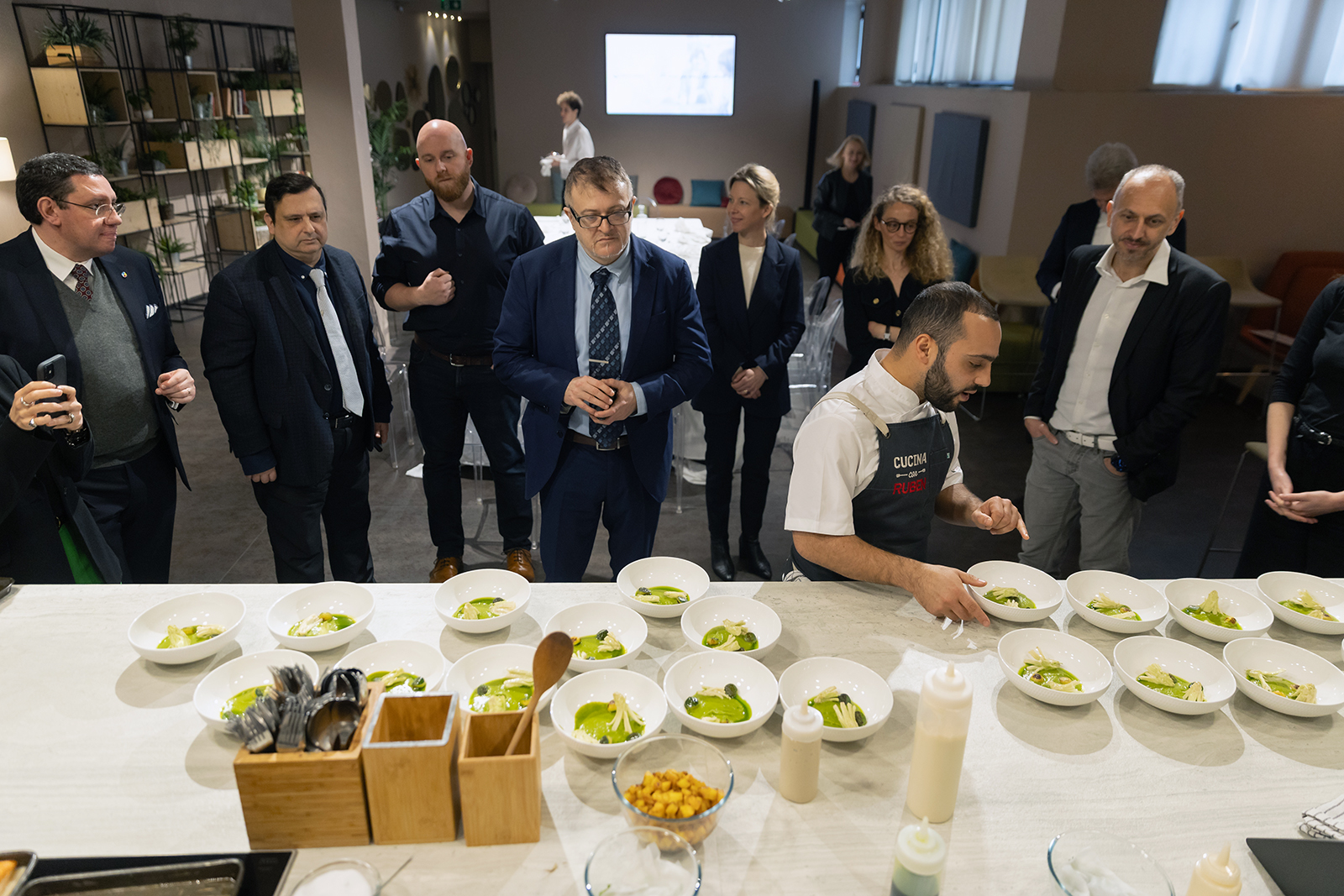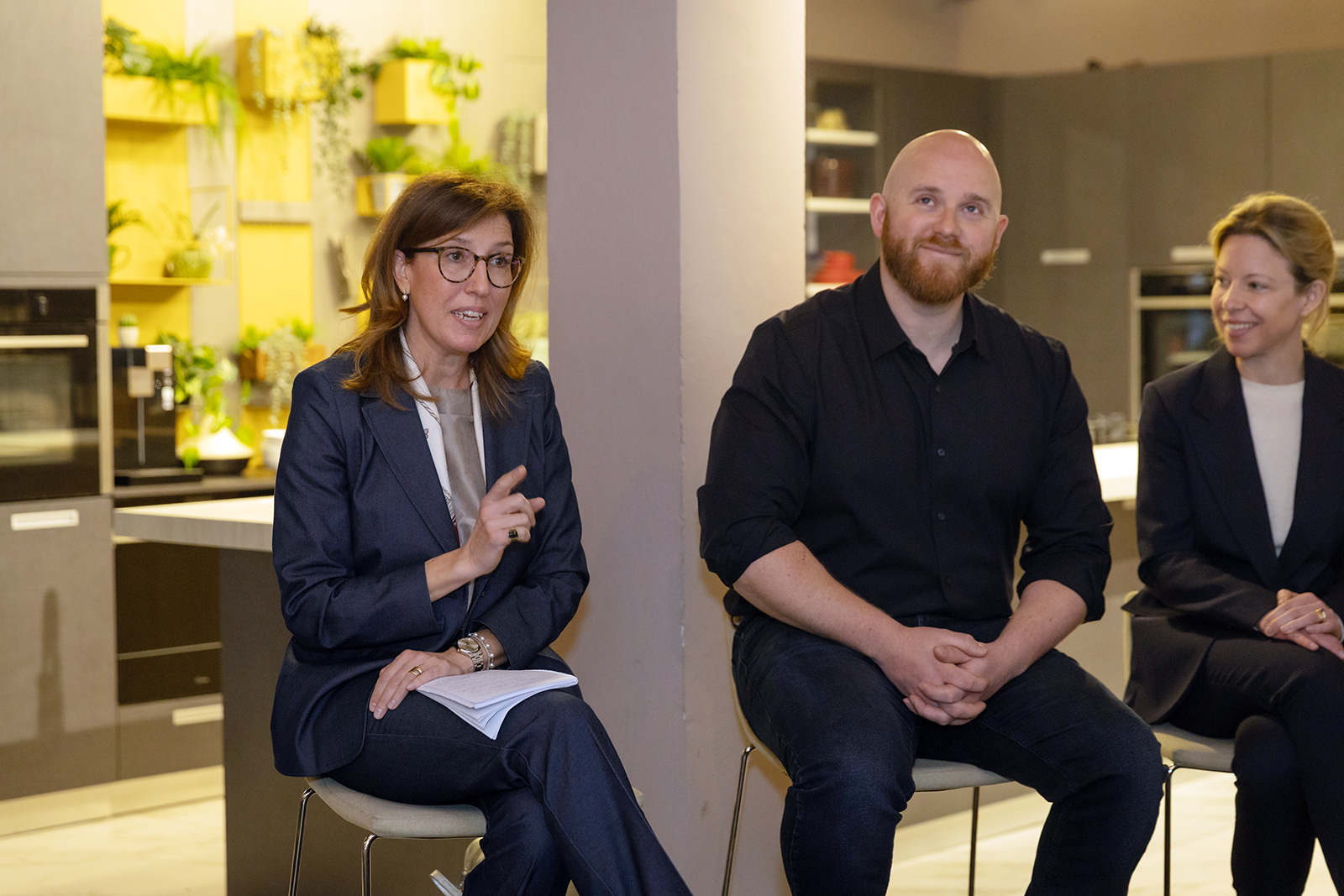Many people don’t think cardiovascular disease (CVD) will happen to them1, however it is currently the leading cause of death in Europe, responsible for 1.7 million deaths annually2. In particular, the most common heart rhythm disorder, Atrial Fibrillation typically impacts 1 in 4 people over 403. It develops in the atria (the upper chambers of the heart) and can cause an irregular and fast heartbeat, often characterised through a feeling of heart flutters.
A healthy resting heart rate should be between 60 and 100 beats a minute, however, with atrial fibrillation the resting heart rate can often increase to 100 -120 beats per minute, or higher4. As such, atrial fibrillation increases the risk of stroke by four to five-fold and contributes to the development of heart failure and other types of CVD4. Atrial fibrillation affects around 11 million people in Europe alone, with 18 million Europeans expected to have AF by 20605.
Beats and Bites
 To raise awareness, we gathered journalists to Milan to educate on atrial fibrillation and highlight the importance for everyone to take simple steps to reduce their risk through easy, everyday habits, such as increased movement and healthy eating.
To raise awareness, we gathered journalists to Milan to educate on atrial fibrillation and highlight the importance for everyone to take simple steps to reduce their risk through easy, everyday habits, such as increased movement and healthy eating.
Where best to showcase this than right in a kitchen. Chef Ruben Bondì cooked three simple yet flavourful, heart-healthy classic Italian dishes live such as roasted salmon with courgette puree and the Roman puntarella salad while moving, to demonstrate how easy eating a healthy diet can be. Not just to feed the audience but mainly to educate.
Internationally known experts joined us to discuss the challenges and the solutions to help people with atrial fibrillation. Amongst the speakers was an Italian cardiologist with a background in sports science, the Vice President of ALICe Lombardia, the leading patient organisation in Italy on stroke, a nutrition expert, as well as Daiichi Sankyo Europe representatives.
Gender has more of an impact than we realise
 The impact of gender in atrial fibrillation and high stroke incidence was a topic that sparked a lot of discussion, culminating in the decisive agreement that further investigation of this is needed among physicians, pharma companies and patient organisations alike. Particularly as not only are women more prone to heart disease, atrial fibrillation and stroke, but they are also heavily impacted by differing attitudes on diagnosis and care – even more so when women’s roles as caregivers come into the conversation.
The impact of gender in atrial fibrillation and high stroke incidence was a topic that sparked a lot of discussion, culminating in the decisive agreement that further investigation of this is needed among physicians, pharma companies and patient organisations alike. Particularly as not only are women more prone to heart disease, atrial fibrillation and stroke, but they are also heavily impacted by differing attitudes on diagnosis and care – even more so when women’s roles as caregivers come into the conversation.
Engaging with media, the five experts expressed the need for holistic care, nutrition’s role in heart health, and the worries that atrial fibrillation patients have around certain food potentially being triggering. This topic was widely discussed and touched on how collaborations can be made to make information around food triggers more accessible.
 The impact of diet trends and cultural diets was also discussed. Being in Italy, Mediterranean diets were a point of high interest due to the proven heart benefits and impact on increased life expectancy, as well as lower risk of heart disease in those regions6. This is due to the high inclusion of healthy fats like extra virgin olive oil, olives, avocados, and avocado oil. One study pointed out that a Mediterranean diet was especially beneficial for women, with a 24% lower risk of cardiovascular disease and a 23% lower risk of total mortality6.
The impact of diet trends and cultural diets was also discussed. Being in Italy, Mediterranean diets were a point of high interest due to the proven heart benefits and impact on increased life expectancy, as well as lower risk of heart disease in those regions6. This is due to the high inclusion of healthy fats like extra virgin olive oil, olives, avocados, and avocado oil. One study pointed out that a Mediterranean diet was especially beneficial for women, with a 24% lower risk of cardiovascular disease and a 23% lower risk of total mortality6.
Overall, the experts agreed that there is a general lack of disease awareness, and a real increased need for education. A knock-on effect resulting in a lack of generational awareness and understanding is also becoming more and more prevalent. This only further highlights the importance of collaborative partnerships and conversations between healthcare professionals, to patient advocacy groups and patients, to industry, to successfully help those with atrial fibrillation and other heart conditions take control of their health.
Tangible takeaways
To provide strategies to support people living with atrial fibrillation and caregivers, the experts shared a number of atrial fibrillation risk-reducing approaches to help people lead a healthy lifestyle. Such strategies included:
- Having two servings of omega-3 rich fish a week for adults7
- Cutting down on salt to less than 5g per day7
- Watching portion sizes and managing stress and sleep levels, which could lead to obesity and complicate CVD issues if not properly managed8
- Doing around 2 hours of moderate intensity exercise per week, like going on a walk, taking the stairs or even dancing, along with strength training 2 days per week7
Conclusion
We at Daiichi Sankyo truly believe that YOUR heart health is in YOUR control, and the journey to protecting it begins with knowledge. Every small action – whether staying active or making heart-smart choices – moves you toward a healthier future. As such, we are committed to supporting patient organisations and scientific societies to help increase awareness of the importance of holistic care and the impact that tiny everyday lifestyle choices can have on your heart health.
To learn more, visit our webpage Your Heart in Your Hands: AF, dedicated to educating and empowering individuals to prioritize their heart health.


